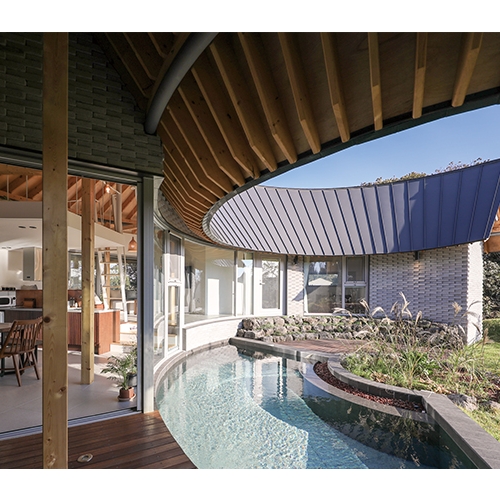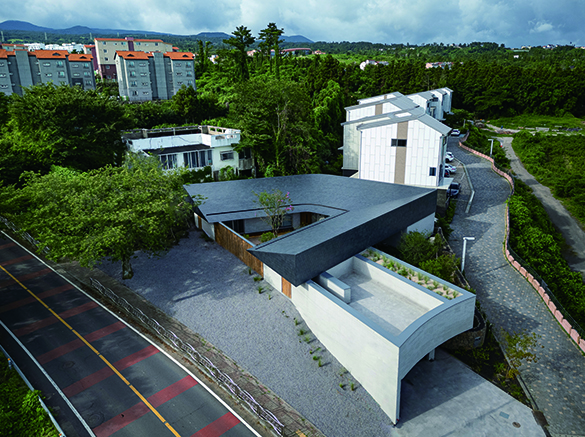SPACE January 2025 (No. 686)
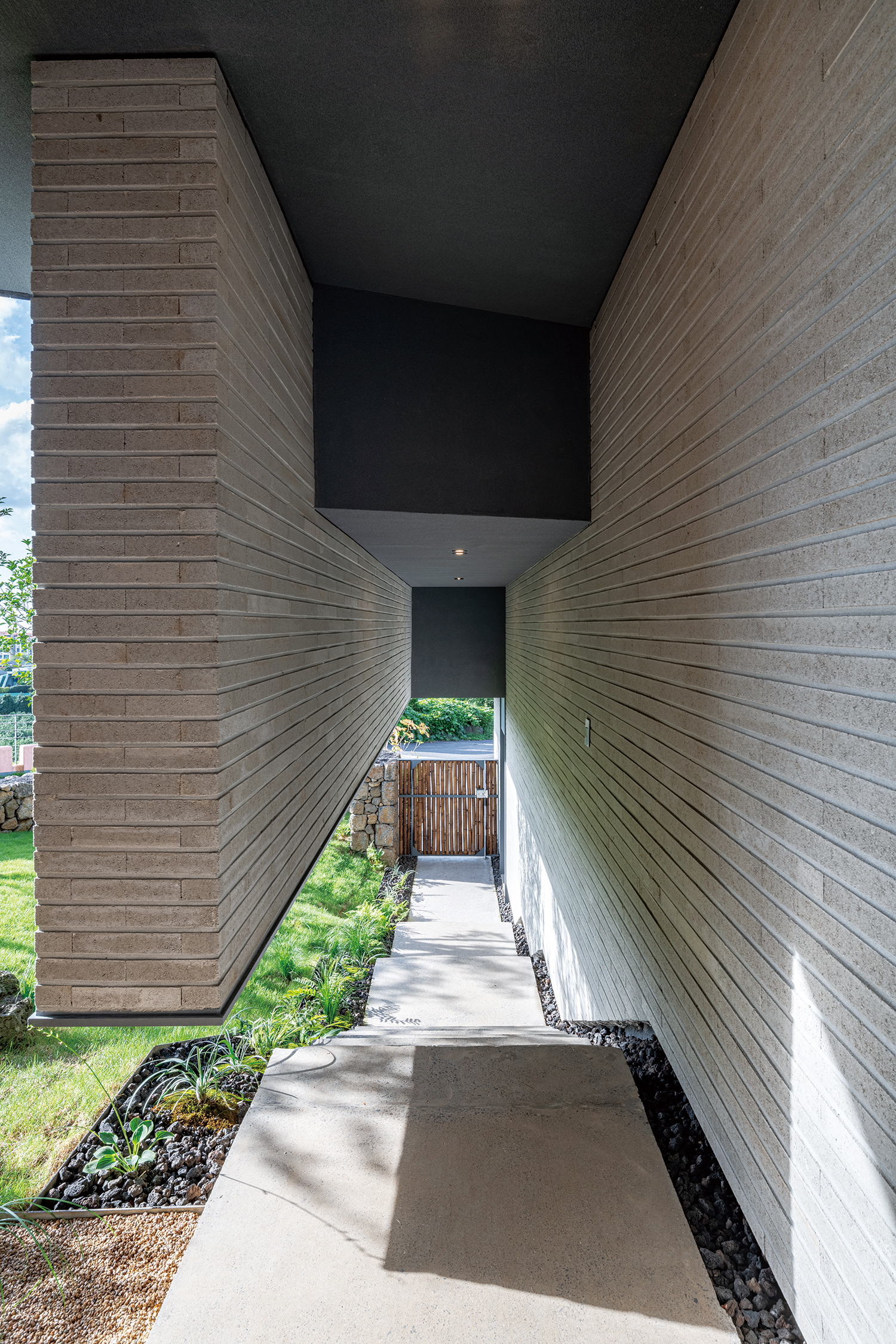
©Lee Jeonghwan
interview Lee Sungbeom principal, LSBA × Bang Yukyung
Bang Yukyung (Bang): Yeonanjae is a detached house located at the entrance to Haean-dong in Jeju-si. What was the surrounding environment of the site like?
Lee Sungbeom (Lee): Haean-dong is a neighbourhood close to the city centre of Jeju-si, which has a more relaxed atmosphere, distinct from the hustle and bustle of urban life. The plot of land is on a slope higher than the roads in hilly and mountainous areas, offering a distant view of the Jeju coastline. Although the land is near a road, there is an old king cherry tree planted between the road and the site, effectively blocking out noise and ensuring privacy—a highly favourable environment.
Bang: How did you approach the design of the house in response to Jeju Island’s environment?
Lee: The most important factor when constructing in Jeju Island is the local climate. To address climate issues such as salt damage, wind, humidity, and ventilation, one must first consider how to define the relationship between the land and the building. In the design of Yeonanjae, I drew upon the concepts of angeori (central structure) and bakgeori (subordinate structure) in the traditional folk houses in Jeju Island, not only for functional purposes but also to make the most of natural light and airflow. The layout sought to establish an organic connection between the various spaces, with the madang (courtyard) as a link. A key design decision was to preserve the slope of the land, which has a difference of approximately 2m, to create ‘porous spaces’. It allowed us to direct the airflow through the house, naturally solving many climate-related issues. The site was divided into two levels: the parking area and the main living spaces centred around the madang. By creating a continuous flow of external space leading from the entry stairs to the madang and the rooftop garden, I sought to resolve both ventilation and natural lighting challenges.
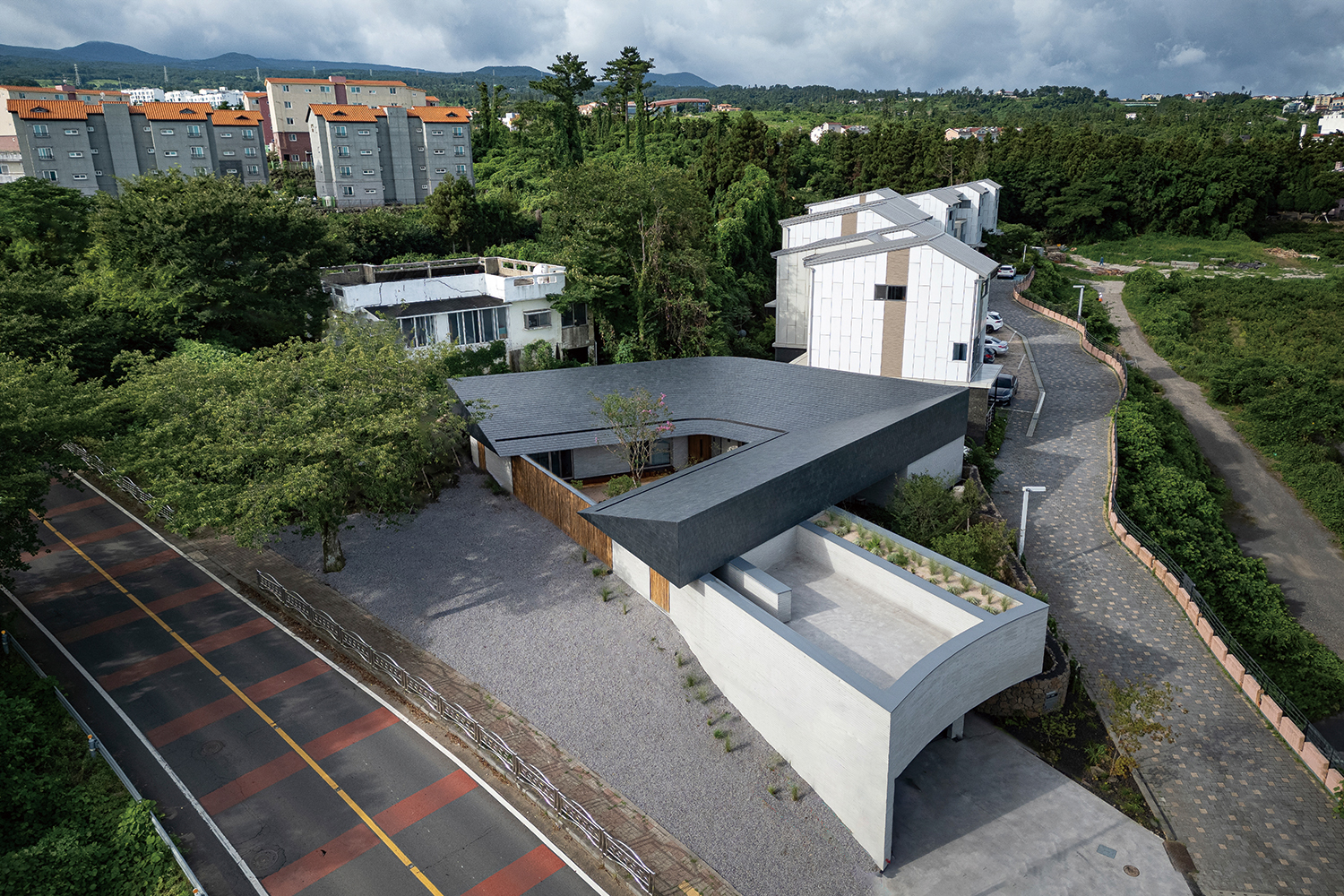
©Lee Sungbeom
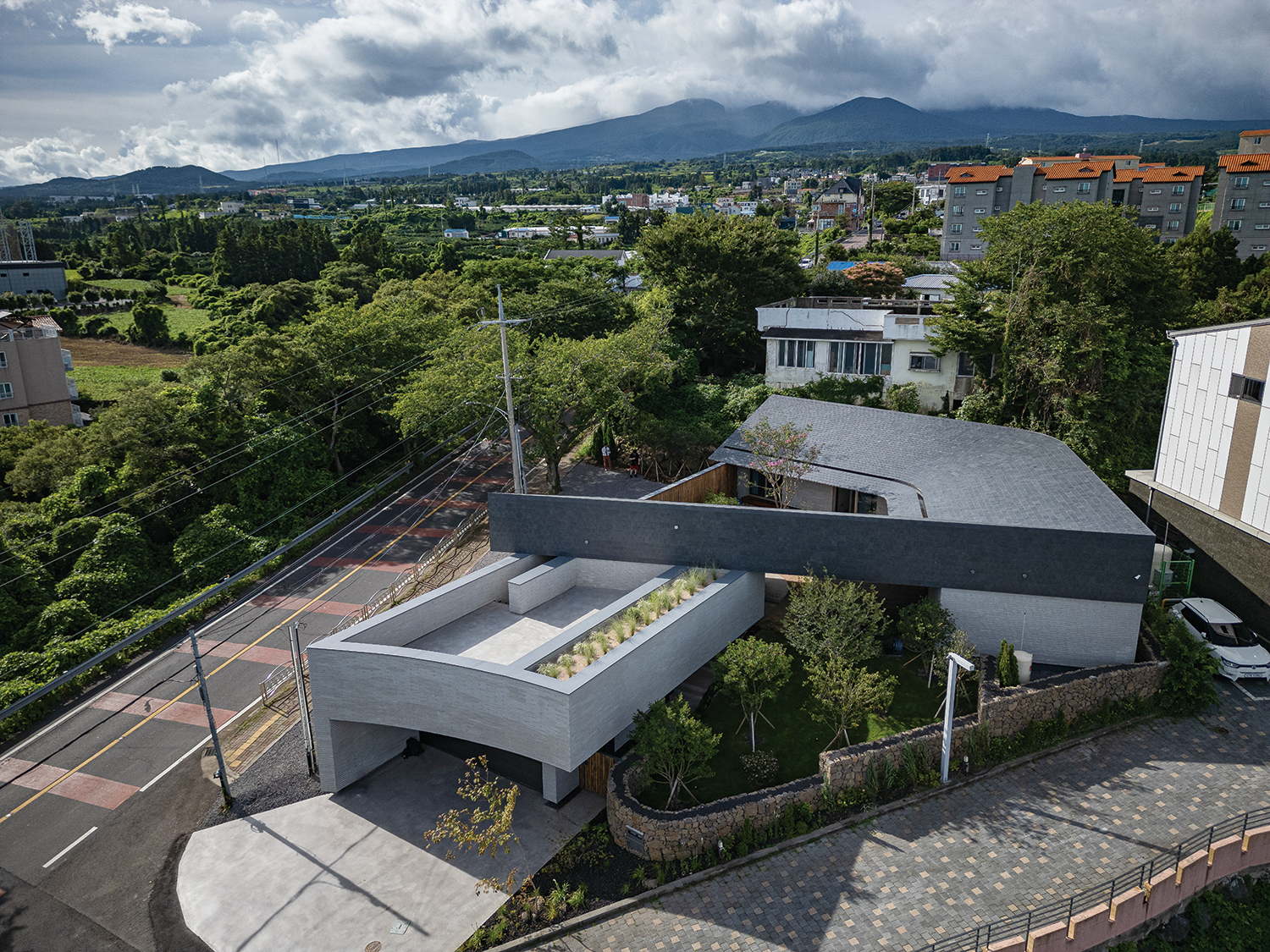
©Lee Sungbeom
Bang: The arrangement of the building and the roof, which wraps around the entire site, leaves a strong impression. What inspired this form? What exactly does ‘porous space’ mean?
Lee: When designing, I avoid thinking of a building as a monolith, solid mass. Instead, I aim to use the entire site by surrounding it with walls or fences while defining the overall form through the roof. The roof is both a symbolic element that reveals the building’s exterior and a defining factor in shaping the interior spaces. It expresses harmony with the surroundings while maintaining a close relationship with the interior. During the design process, I carefully adjust the building’s plan and section proportionally, segmenting the spaces to maximise the surface area. It allows the building to have various points of connection with external spaces like the yard or garden. It is a sort of master plan approach. These ‘porous spaces’, in contrast to a solid mass, provoke diverse spatial experiences while fostering a more active relationship with the environment. The large roof of Yeonanjae was inspired by traditional folk house’s roof, designed to respond to the flow of the wind. From the elevation, the roof is not overly ornate or obtrusive but is treated as a gently sloping roof, lowered in height to blend with the surrounding landscape. In particular, the eaves reflect the irregular form of the land itself. To replace the metal roofing, vulnerable to salt damage, I used natural slate, which resembles the colour and texture of Jeju Island’s basalt, to create a sense of weight throughout the building.
Bang: The eaves and piloti spaces are exceptionally spacious. Is there a specific purpose behind this?
Lee: The client, a native of Jeju Island, needed various spaces in the house where people could gather and host events. The deep eaves, formed beneath the roof, not only fulfil this requirement but also enhance the functionality of the wooden porch and the deck, which encircles the madang. Additionally, the eaves help regulate the amount of sunlight entering the interior, creating a cool shade that prevents the temperature inside the building from rising.
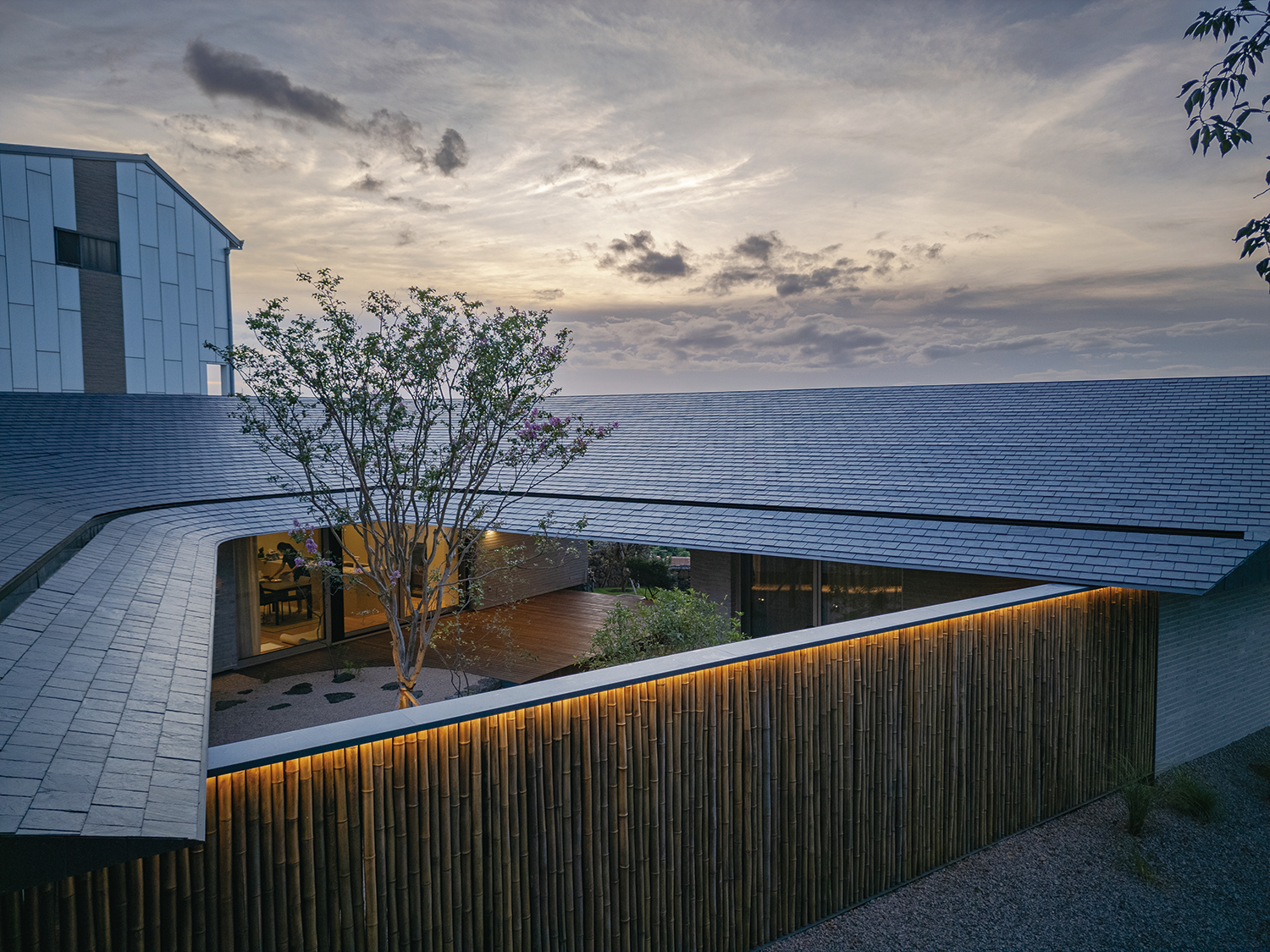
©Lee Sungbeom
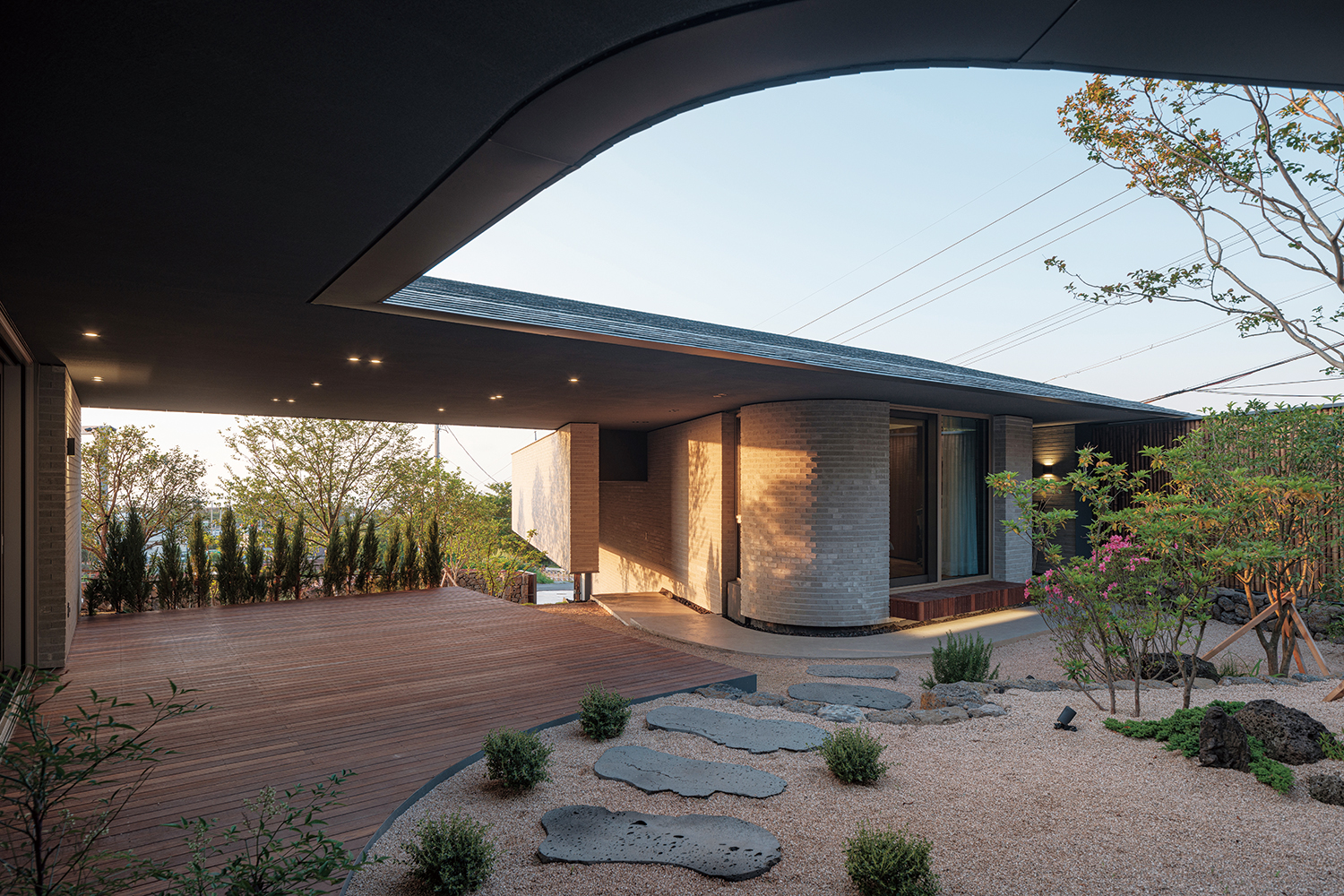

Bang: A fired bamboo fence was placed on the north-western side, facing the road. Why did you choose bamboo?
Lee: Bamboo was used to block the harsh north-western winds, serving the same purpose as a windbreak or the walls of traditional folk house in Jeju Island. With its low moisture content, the kiln-dried bamboo offers durability and preservative qualities, making it a convenient and low-maintenance natural material. It is available in various thicknesses and lengths, and by cutting a single piece into thirds, material waste is minimised when applied to the fence. While other projects typically used bamboo in a single layer, this one was designed to withstand Jeju Island’s strong winds by stacking it in a double layer. It reinforced the structure and developed the details to replace individual sections easily. In addition to providing psychological comfort through its unique texture, the bamboo allows air and light to flow through its gaps, offering a subtle, practical shading effect without being overwhelming.
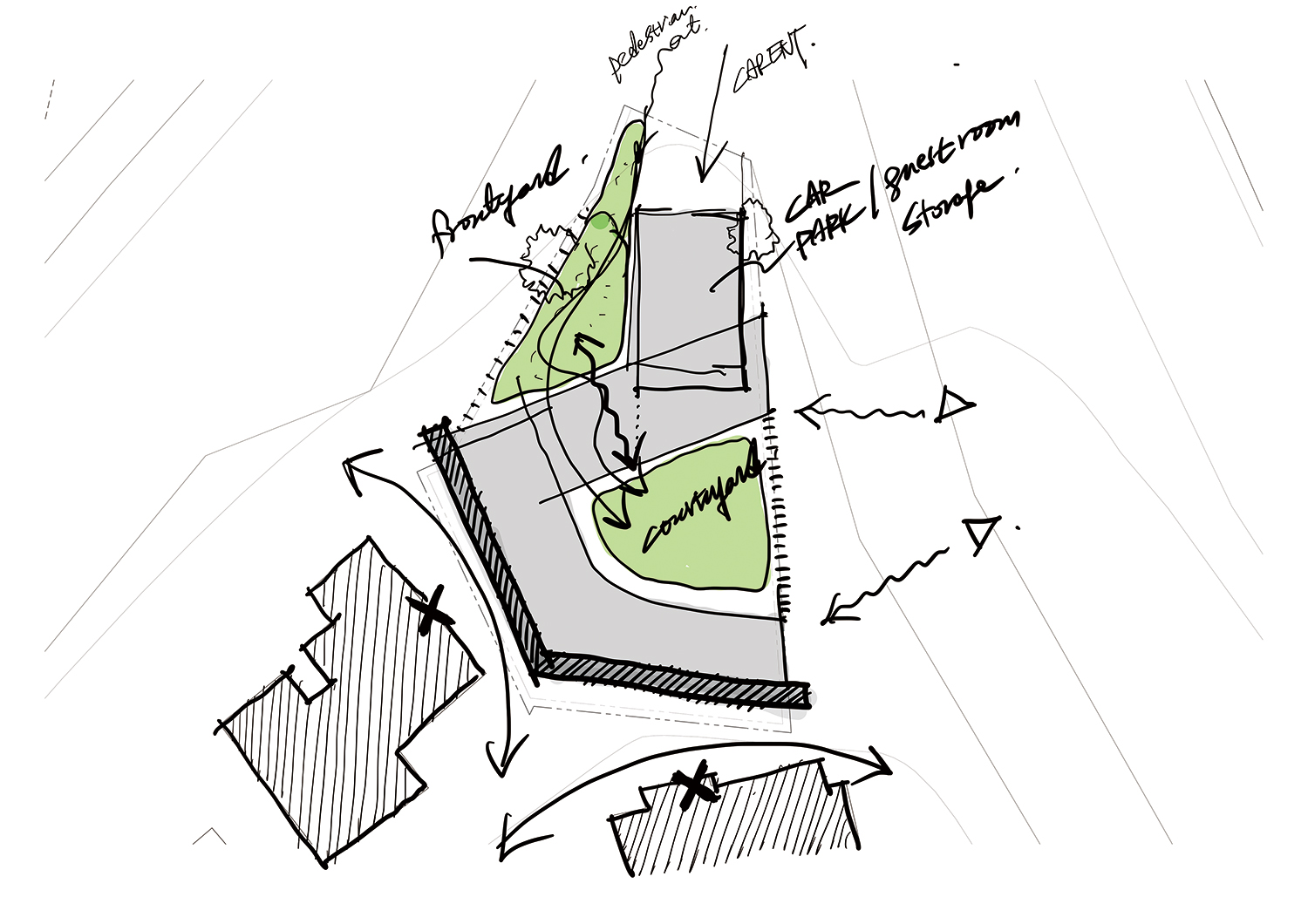
Bang: How did you organise the interior space? Does the design take shape from the ‘outside in’?
Lee: The aim was to appropriately reflect the clients’ lifestyle within the spatial structure of a traditional folk house in Jeju Island. Although the house is shared by three people – parents and their son – it was essential to define separate areas and maintain privacy for each family member. The main house (angeori) separates the couple’s bedrooms with a bathroom in between, but the design allows for a visual connection through a glass window in the bathroom. The son’s room in the annexe (bakgeori) has window facing the madang and a narrow wooden porch, ensuring the relationship with the main house remains intact. Inside, the ceiling height changes along the curved slope of the roof, varying from 2m-high in the couple’s bedrooms (a space with narrow wooden porch) to 4m-high in the sunken living room, offering a range of spatial experiences. Although my design process might seem to follow a linear progression from exterior (form) to interior (programme), it is not a straightforward sequence. I think about the plan, elevation, and cross-section simultaneously, which leads to a comprehensive three-dimensional space.
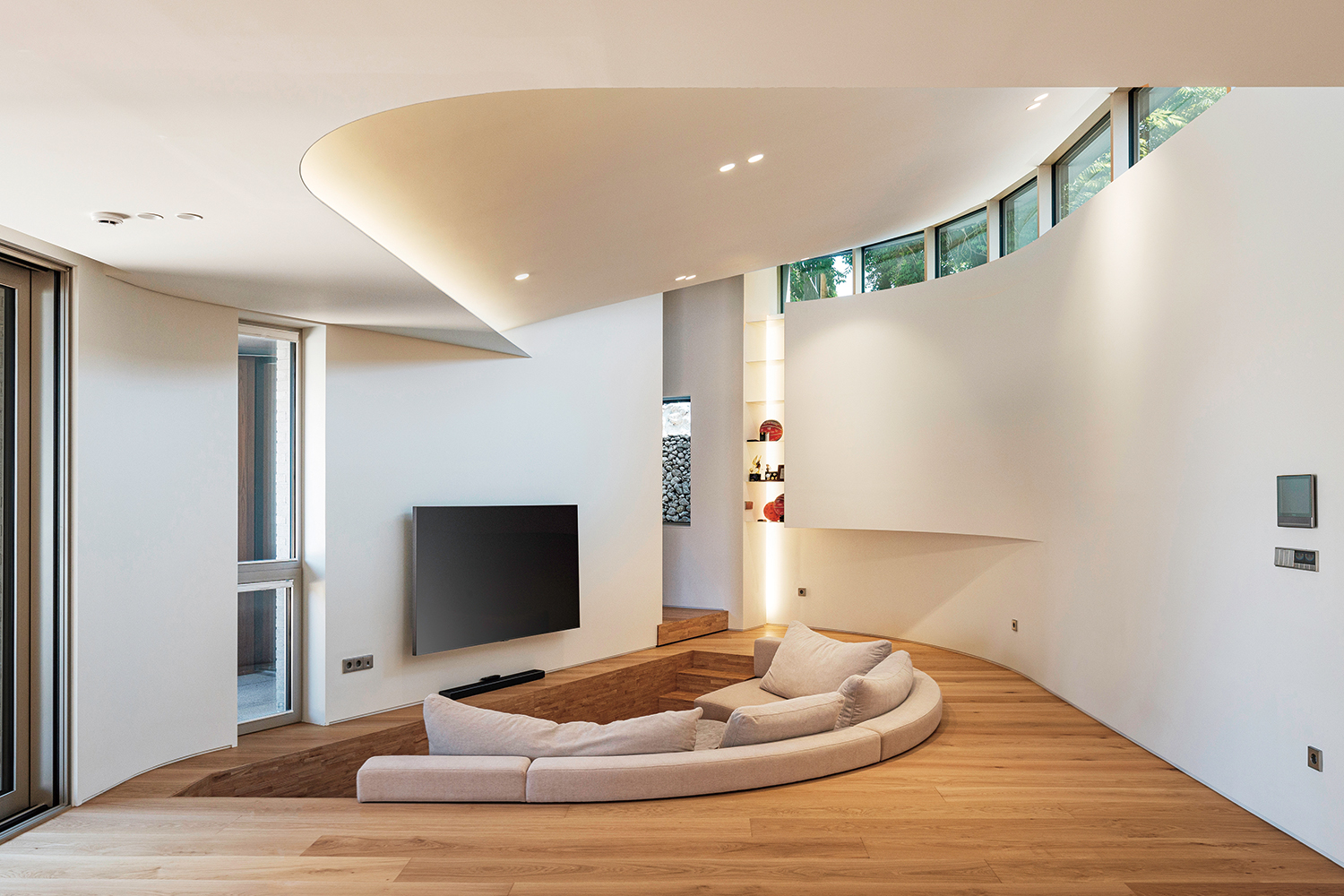
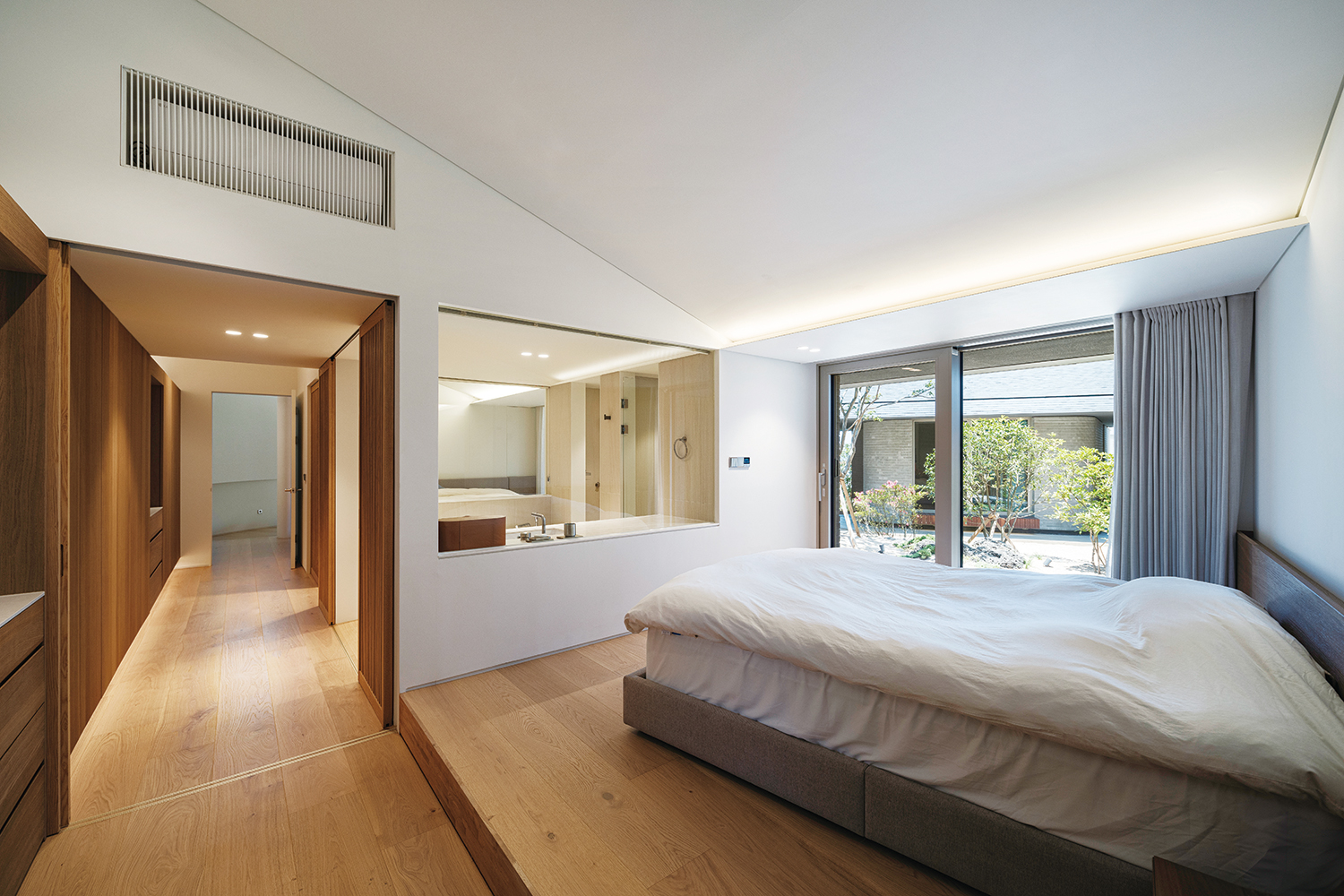
Bang: There seems to be noticeable progress in terms of the integrity of individual elements, the detail of finishes, and overall balance.
Lee: As my experience in applying materials and construction methods grows, there is undoubtedly a greater flexibility in my approach. In minor details, such as the natural slate joints and bamboo joinery, I find myself establishing a relationship with the land, guiding the project through both big and small decisions with greater confidence. While I’ve worked on various projects in Jeju Island – from stays and cafés to residential homes – this project stands out as especially fulfilling upon completion. Yeonanjae is a name given by the client, meaning ‘a space that is connected yet cosy and safe’. Sitting on the wooden porch, with a small madang in between, one can see the distant Jeju coastline to the north, and beyond the bamboo fence, the king cherry tree fill the sky. Watching the vision that I imagined during the design process gradually take shape with the changing seasons has brought me a sense of pride. I hope the life that the family envisioned will also beautifully flourish in this space.
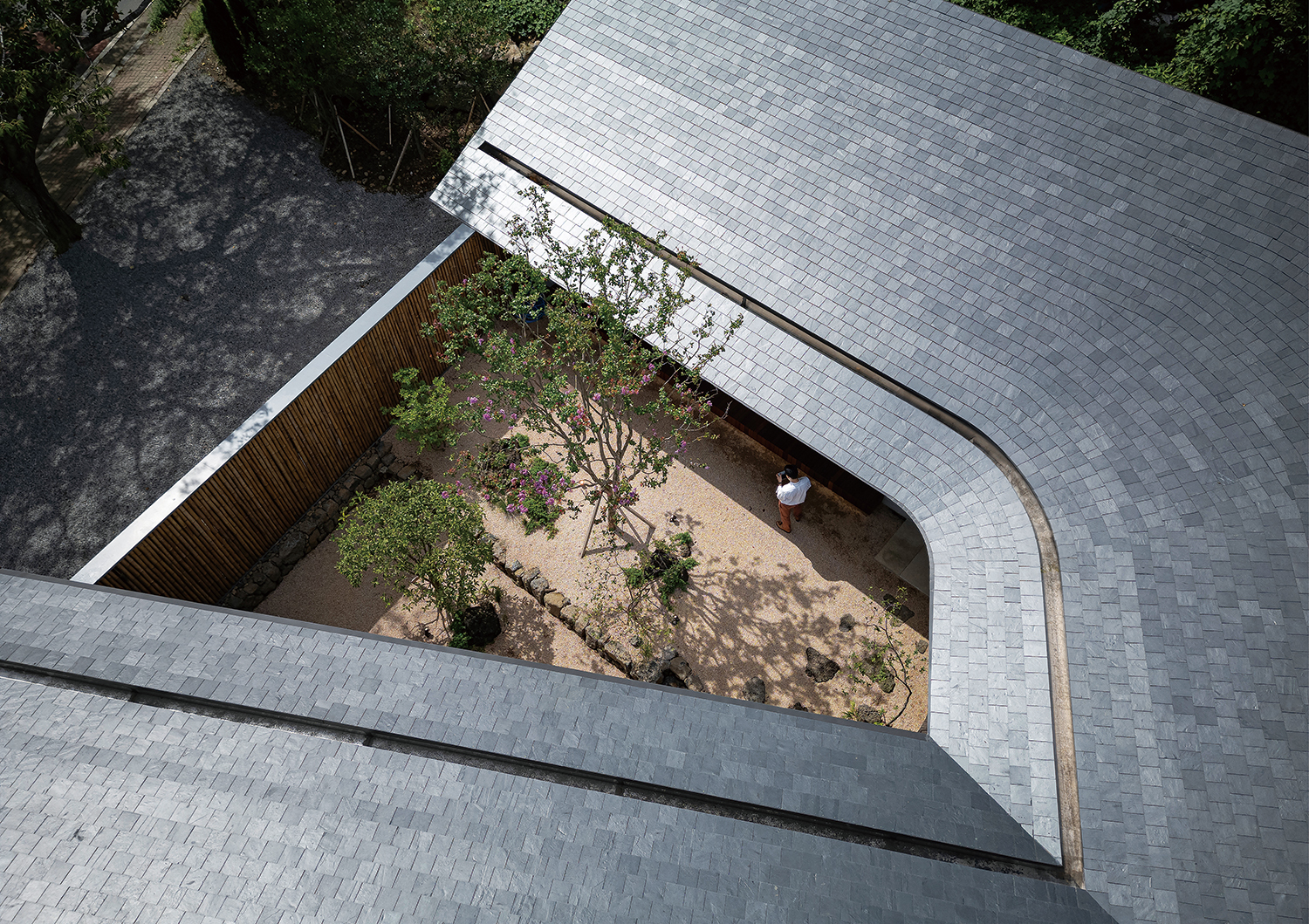
©Lee Sungbeom
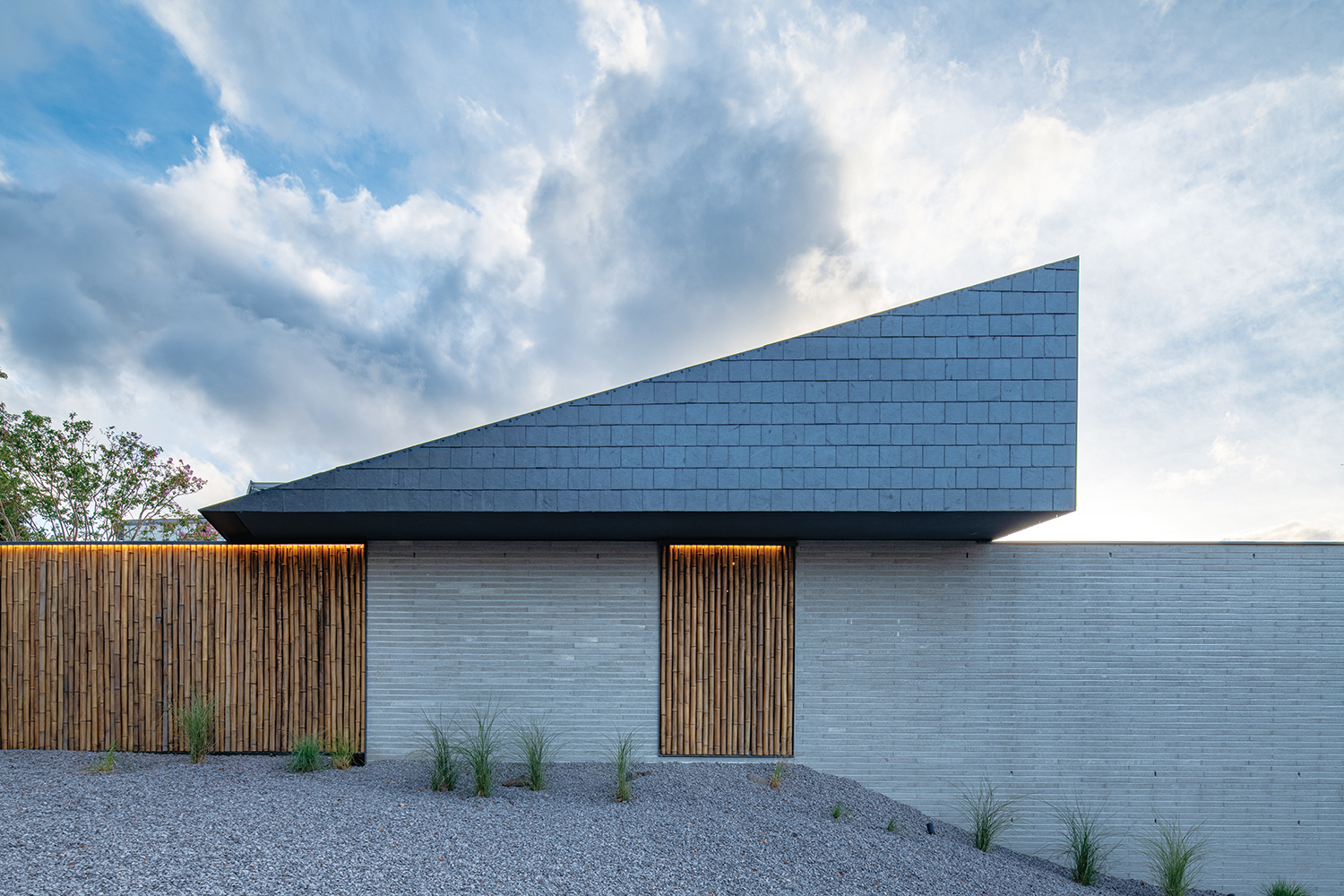
©Lee Jeonghwan
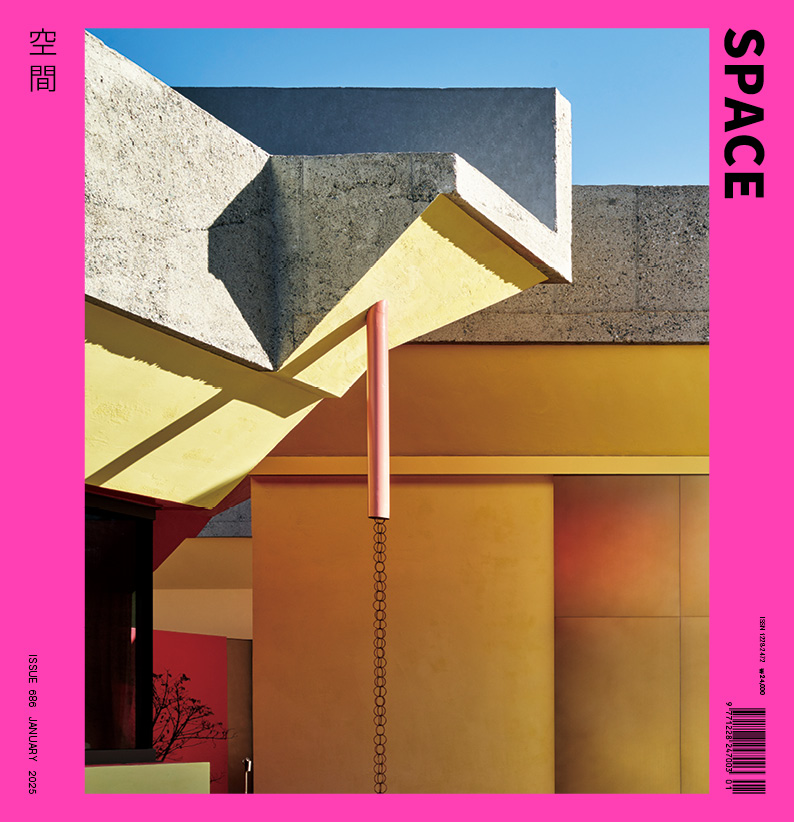
LSBA (Lee Sungbeom)
Kim Seongjin
Haean-dong, Jeju-si, Jeju-do, Korea
single house
645㎡
277.85㎡
235.36㎡
2F
2
7.1m
43.07%
36.49%
RC
natural slate, brick
water paint
Dream Structure Engineering (Kim Minkwan)
GM EMC (Kang Wongu)
Ia_company (Lee Kiwoon)
Jan. 2022 – Jan. 2023
Mar. 2023 – May 2024
Kim Tongil
MULSORI (Kim Sine), Yeonil soop (An Jeonghui)






